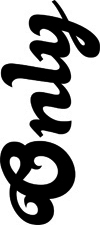only magazine
↵ home
Found Photos

By curtis
Thursday March 10, 2005
Anonymous Digital Crap
Werner Herzog, in a film documenting Herzong eating one of his own well-weathered boots after losing a dare to filmmaker Errol Morris, claims that we as a culture need to create new images in order to survive. Keeping that loosely paraphrased quote in mind, I was recently referred to a website that contains thousands of collected found photos. For those unfamiliar with the site, 10eastern.com hosts a huge archive of photos collected from peer to peer file sharing by the site’s proprietor, Rich Vogel. What originally was an archive consisting of photos Vogel had found sifting though other file sharers’ My Pictures folders–his taste reflected in the editing of the images–has now grown beyond anything that could ever be credited to one person’s taste.
It’s impossible to go out without catching a glimpse of someone gazing at their own image as they snap another photo. Held outstretched at arm’s length–people seeming more enraptured with the virtual image of the world as compared to the real thing–the digital camera has generated an incalculable amount of images that are printed, e-mailed, posted, published, deleted every second. While not limited exclusively to the digital source image, Found Photos proliferating anonymous content is clearly a product of the increasingly smaller, cheaper and omnipresent tool that is the digital point-and-shoot.
In sifting through the archives of Found Photos I was struck by the similarities between this library of images and the kind of research/collection art that’s been pervasive in the art world. Using the photo archive in the context of the gallery, Vancouver artist Steven Shearer, in his large photo collages seen recently at the Contemporary Art Gallery, arranges his collections of found photographs obtained from the Internet to explore ideas of representation through collected amateur and snapshot photographs. Similar to Found Photos, which in addition to its massive collection of generic photos has several themed galleries ranging in content from FU (flipping the bird at the camera) to Kissing, Shearer groups his collaged collections in terms of specific themes and content such as Slumber, depicting candid photos of various sleepers in awkward poses, and Guitar #5, males brandishing their preferred axes. But where Shearer’s works venture beyond the summation of their parts, elevating his found images to speak to issues beyond the content of the photos, Found Photos does not stand as something that could be considered in the framework of art. Although there is a certain sense of selection and editing when viewing the images, there is no apparent commentary to the images as individuals or as a gestalt–yet there is an appeal to these archives that must be taken into consideration.
At a talk given last week at Emily Carr Institute, American artist Sam Durant discussed his use of found photographs and in obtaining these images, his dealings with Microsoft, who is in the process of purchasing the rights of all kinds of images, journalistic to fine art, photographic or otherwise.
If we are to survive a future in which a huge corporation is, in the form of images, buying the rights to both our collective and personal histories, from images representing specific cultures and social groups to images we remember from childhood, the accessibility of digital technology is our greatest advantage to confronting this potential capitalistic monopoly over history. Using Rich Vogel’s Found Photos site as an example, the only way to create images to be owned collectively, as opposed to a corporation, is to be constantly generating images and maintaining an anonymity as they are posted. Of course, the amount of images that are complete crap outweigh the masterpieces and distinguishing between the two is becoming nearly impossible, so just keep in mind, a little editing never hurt.
